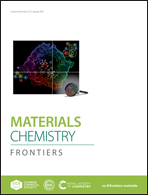In situ etching strategy to construct yolk–shell CoSe2@NiCoSe4-NC heterostructures for high-performance sodium ion battery†
Abstract
A yolk–shell structure CoSe2@NiCoSe4-NC has been successfully synthesized through an in situ etching and ion exchange strategy, as well as the subsequent selenization process of the ZIF-67 dodecahedron precursor. Due to the unique yolk–shell structure and bimetallic synergistic effect, the CoSe2@NiCoSe4-NC heterostructure exhibits high conductivity and enhanced specific surface aera for the incorporation of electrode and electrolyte, which provide good charge transfer kinetics and facilitate Na+ transport, as well as accelerating the reaction kinetics. When used as an anode material for sodium-ion batteries, it exhibits promising electrochemical performance, including excellent rate capability and outstanding cycle stability. The yolk–shell structure CoSe2@NiCoSe4-NC shows a high specific capacity of 341.3 mA h g−1 at a current density of 5 A g−1 and can still deliver a 94.8% retention rate after 400 cycles at a current density of 1 A g−1, which proves that the material is a good sodium-ion battery anode material. This simple and universal method can provide a new method for the preparation of bimetallic selenide and yolk–shell structure anode materials.



 Please wait while we load your content...
Please wait while we load your content...